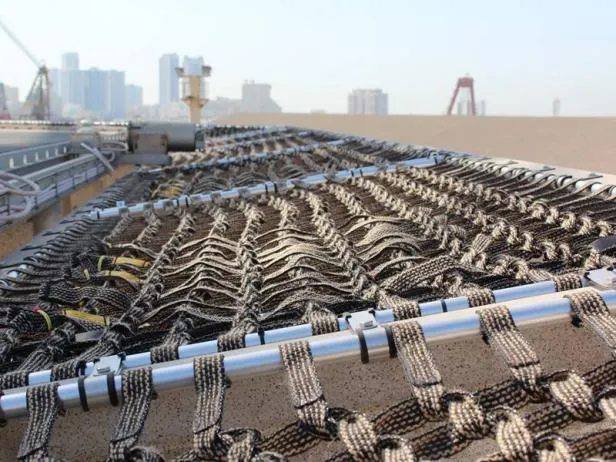- Industrial zone, South of Anping Town, Hengshui, Hebei, China.
- sales@hfpetromesh.com
- +86-18931809706
 Afrikaans
Afrikaans  Albanian
Albanian  Amharic
Amharic  Arabic
Arabic  Armenian
Armenian  Azerbaijani
Azerbaijani  Basque
Basque  Belarusian
Belarusian  Bengali
Bengali  Bosnian
Bosnian  Bulgarian
Bulgarian  Catalan
Catalan  Cebuano
Cebuano  Corsican
Corsican  Croatian
Croatian  Czech
Czech  Danish
Danish  Dutch
Dutch  English
English  Esperanto
Esperanto  Estonian
Estonian  Finnish
Finnish  French
French  Frisian
Frisian  Galician
Galician  Georgian
Georgian  German
German  Greek
Greek  Gujarati
Gujarati  Haitian Creole
Haitian Creole  hausa
hausa  hawaiian
hawaiian  Hebrew
Hebrew  Hindi
Hindi  Miao
Miao  Hungarian
Hungarian  Icelandic
Icelandic  igbo
igbo  Indonesian
Indonesian  irish
irish  Italian
Italian  Japanese
Japanese  Javanese
Javanese  Kannada
Kannada  kazakh
kazakh  Khmer
Khmer  Rwandese
Rwandese  Korean
Korean  Kurdish
Kurdish  Kyrgyz
Kyrgyz  Lao
Lao  Latin
Latin  Latvian
Latvian  Lithuanian
Lithuanian  Luxembourgish
Luxembourgish  Macedonian
Macedonian  Malgashi
Malgashi  Malay
Malay  Malayalam
Malayalam  Maltese
Maltese  Maori
Maori  Marathi
Marathi  Mongolian
Mongolian  Myanmar
Myanmar  Nepali
Nepali  Norwegian
Norwegian  Norwegian
Norwegian  Occitan
Occitan  Pashto
Pashto  Persian
Persian  Polish
Polish  Portuguese
Portuguese  Punjabi
Punjabi  Romanian
Romanian  Russian
Russian  Samoan
Samoan  Scottish Gaelic
Scottish Gaelic  Serbian
Serbian  Sesotho
Sesotho  Shona
Shona  Sindhi
Sindhi  Sinhala
Sinhala  Slovak
Slovak  Slovenian
Slovenian  Somali
Somali  Spanish
Spanish  Sundanese
Sundanese  Swahili
Swahili  Swedish
Swedish  Tagalog
Tagalog  Tajik
Tajik  Tamil
Tamil  Tatar
Tatar  Telugu
Telugu  Thai
Thai  Turkish
Turkish  Turkmen
Turkmen  Ukrainian
Ukrainian  Urdu
Urdu  Uighur
Uighur  Uzbek
Uzbek  Vietnamese
Vietnamese  Welsh
Welsh  Bantu
Bantu  Yiddish
Yiddish  Yoruba
Yoruba  Zulu
Zulu
- Afrikaans
- Albanian
- Amharic
- Arabic
- Armenian
- Azerbaijani
- Basque
- Belarusian
- Bengali
- Bosnian
- Bulgarian
- Catalan
- Cebuano
- Corsican
- Croatian
- Czech
- Danish
- Dutch
- English
- Esperanto
- Estonian
- Finnish
- French
- Frisian
- Galician
- Georgian
- German
- Greek
- Gujarati
- Haitian Creole
- hausa
- hawaiian
- Hebrew
- Hindi
- Miao
- Hungarian
- Icelandic
- igbo
- Indonesian
- irish
- Italian
- Japanese
- Javanese
- Kannada
- kazakh
- Khmer
- Rwandese
- Korean
- Kurdish
- Kyrgyz
- Lao
- Latin
- Latvian
- Lithuanian
- Luxembourgish
- Macedonian
- Malgashi
- Malay
- Malayalam
- Maltese
- Maori
- Marathi
- Mongolian
- Myanmar
- Nepali
- Norwegian
- Norwegian
- Occitan
- Pashto
- Persian
- Polish
- Portuguese
- Punjabi
- Romanian
- Russian
- Samoan
- Scottish Gaelic
- Serbian
- Sesotho
- Shona
- Sindhi
- Sinhala
- Slovak
- Slovenian
- Somali
- Spanish
- Sundanese
- Swahili
- Swedish
- Tagalog
- Tajik
- Tamil
- Tatar
- Telugu
- Thai
- Turkish
- Turkmen
- Ukrainian
- Urdu
- Uighur
- Uzbek
- Vietnamese
- Welsh
- Bantu
- Yiddish
- Yoruba
- Zulu
កុម្ភៈ . 02, 2025 01:40
Back to list
grating galvanized
In the ever-evolving landscape of modern construction and industrial applications, grating galvanized products stand as a beacon of durability and reliability. Their prominent role in projects demanding resistance to environmental factors and the ability to endure heavy loads makes them indispensable, especially when ensuring safety and functionality in both urban and rural settings. Here, we explore the critical elements that make galvanized grating a key player in today’s fast-paced industry, highlighting aspects that resonate with the principles of experience, expertise, authoritativeness, and trustworthiness.
Trustworthiness in the context of construction materials aligns closely with proven performance and reliability. Grating galvanized products have earned their reputation by consistently delivering on promises of strength and resilience. End-users, from construction site managers to municipal planners, trust these gratings because they provide long-lasting value and enhanced safety features. Selecting a grating product usually involves assessments from seasoned engineers and material experts, who factor in site-specific challenges and the projected longevity of the material under the planned conditions. Moreover, the environmental impact of using galvanized grating is a deliberate consideration. The zinc layer not only protects the steel but also contributes to the sustainability goals by enhancing the material’s durability, thus reducing the frequency of raw material extraction and manufacturing. When compared to non-galvanized options, these gratings help in achieving eco-friendly credentials, appealing to companies that prioritize green building and sustainable practices. In synthesis, grating galvanized products represent a field of expertise that is underpinned by years of industrial application and refinement. As industries evolve and the demand for sustainable, trustworthy, and authoritative building materials increases, the reliance on such dependable components will continue to grow. For stakeholders looking to invest in robust infrastructure and industrial solutions, galvanized grating stands out as a choice that meets the rigorous demands of modern construction and engineering with poise and reliability. The balance of endurance, cost-effectiveness, and safety defines its place in the market—an asset not only to those who install it but also to the communities and environments it protects and serves.


Trustworthiness in the context of construction materials aligns closely with proven performance and reliability. Grating galvanized products have earned their reputation by consistently delivering on promises of strength and resilience. End-users, from construction site managers to municipal planners, trust these gratings because they provide long-lasting value and enhanced safety features. Selecting a grating product usually involves assessments from seasoned engineers and material experts, who factor in site-specific challenges and the projected longevity of the material under the planned conditions. Moreover, the environmental impact of using galvanized grating is a deliberate consideration. The zinc layer not only protects the steel but also contributes to the sustainability goals by enhancing the material’s durability, thus reducing the frequency of raw material extraction and manufacturing. When compared to non-galvanized options, these gratings help in achieving eco-friendly credentials, appealing to companies that prioritize green building and sustainable practices. In synthesis, grating galvanized products represent a field of expertise that is underpinned by years of industrial application and refinement. As industries evolve and the demand for sustainable, trustworthy, and authoritative building materials increases, the reliance on such dependable components will continue to grow. For stakeholders looking to invest in robust infrastructure and industrial solutions, galvanized grating stands out as a choice that meets the rigorous demands of modern construction and engineering with poise and reliability. The balance of endurance, cost-effectiveness, and safety defines its place in the market—an asset not only to those who install it but also to the communities and environments it protects and serves.
Share
Prev:
Next:
Latest news
-
Welded Steel Bar Grating: The Rugged Industrial Flooring Solution Built for Load and LongevityNewsJun.24,2025
-
Steel Walkway Grating: Reliable, Resilient, and Built for Every StepNewsJun.24,2025
-
Shale Shaker Screen for Sale: Optimize Drilling Efficiency with Precision Screening PowerNewsJun.24,2025
-
Shaker Screen for Sale: Elevate Your Drilling Efficiency with Durable Separation SolutionsNewsJun.24,2025
-
Press Locked Steel Grating: Industrial Strength with Precision Fit for Heavy-Duty ApplicationsNewsJun.24,2025
-
Perimeter Safety Netting: The Critical Safety Upgrade for Every HelipadNewsJun.24,2025